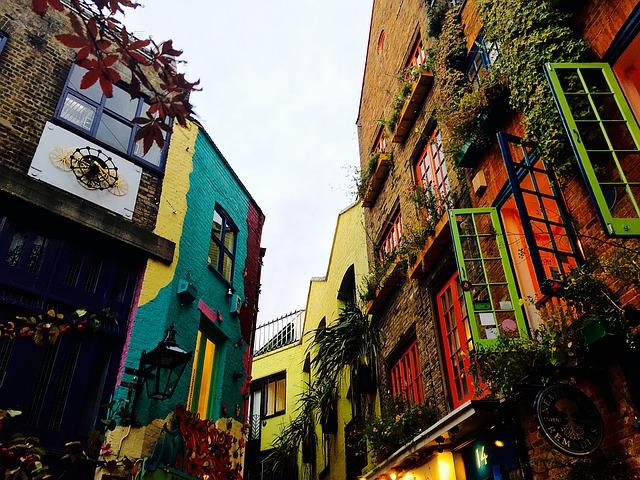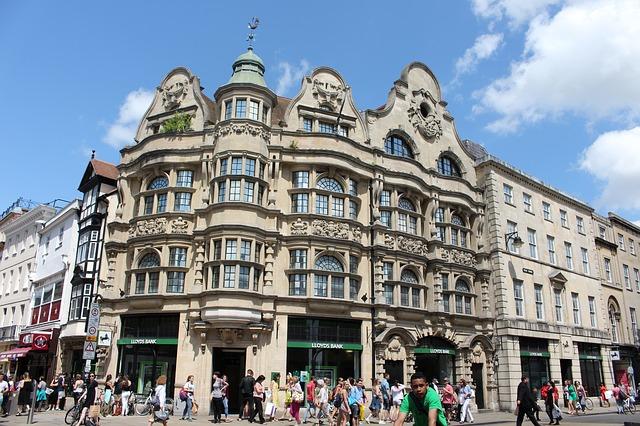Notting Hill
The London borough of Notting Hill became world famous after the success of the romantic comedy ‘A Place Called Notting Hill’. Starring Julia Roberts and Hugh Grant. In addition to being the setting of a romantic story, the district attracts thousands of tourists because it is a charming district (considered by some as the most charming in London). Full of Victorian buildings, colorful houses and several shops and antique shops full of objects for those who like to dig up design pieces and vintage clothes.
After the 80’s many changes were made in this area, which until then had modest prices, which began to attract a younger population. Today, Notting Hill is predominantly white and can pay a high price for living in the neighbourhood.
History
Although it is now a favourite with tourists, Notting Hill has a rather turbulent history. Hard as it may be to believe, it is not always so charming. Until the 1950s, the houses in the area (once owned by the aristocracy) were inhabited by several families who lived in very precarious conditions.
This changed shortly after the end of the Second World War. The area was gradually inhabited by several immigrants from the Caribbean colonies, the West Indies (West Indies or the Caribbean Basin), and others from Africa.
With a large black population, Notting Hill was the scene of the first radical conflicts that took place in London in August 1958.
In the years that followed, these immigrants organized themselves and created the first Notting Hill Carnival, which is currently responsible for the large number of visitors (about 1 million) on the last weekend of August.
Portobello Road and Portobello Market
Portobello Road is the main tourist and commercial axis of the district and is also the gateway to Notting Hill. It is here that the weekly Portobello Antiques Market is held and is known as a must-see attraction. Especially for those who like to dig for vintage clothes and accessories, art, books and records, as well as many different and beautiful things.
Always on Saturday morning, the Portobello market is a London tradition that attracts both tourists and locals from different parts of London. The main days of the fair are Friday and Saturday, although a smaller market takes place from Monday to Thursday.
On weekdays, locals buy fruit and vegetables. Second-hand items are included on Fridays, but Saturday is the busiest day of the market, when all the antique stalls are open and bargain hunters arrive.
There are also a few clothing stalls. Almost a kilometre long, this lively West London market offers an endless variety of goods.
Neighbourhood life
Although it is a popular tourist area during the high season months, life in Notting Hill can be considered quiet. The area is extremely safe and has spacious houses with terraces, backyards and gardens, reminiscent of small suburban homes.
You can rent a bike to go for a ride, and there is plenty of room for the family. Literature lovers will love to find new titles at the Travel Bookshop (just like in the movie)! For those who like good restaurants, there are plenty of choices in Notting Hill.
Notting Hill Carnival
In August, millions of people celebrate Europe’s biggest street festival. The Notting Hill Carnival is the Caribbean festival that takes over West London.
A huge parade of floats passes by the Notting Hill Carnival Road, filling the streets with costumes, brass bands, calypso music and a variety of delicious food.
It is advisable to be well prepared for the Notting Hill Carnival festivities. As it covers a large area, some streets are closed and others are interrupted during the carnival weekend.
Make sure you have a map of the carnival route, as well as information on public toilets and bars.
It is also useful to check the weather forecast in London before the carnival. Take a pair of sunglasses, an umbrella and a bottle of water.
Artistic Life
The neighborhood breathes art. On fair days, it is not uncommon to find street artists and musicians, who give a special show to entertain the tourists who circulate in the Portobello market. It is also possible to find visual artists who exhibit their works and buy artworks of different styles at the street market and in local shops.







